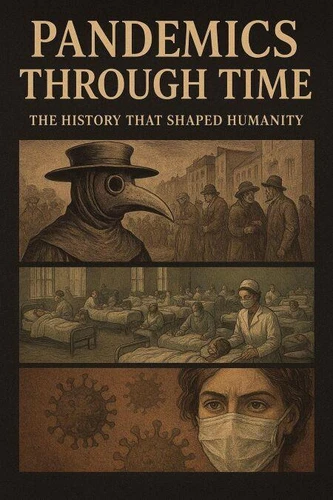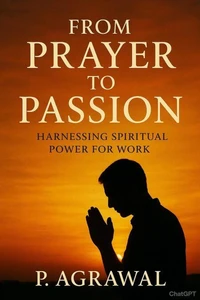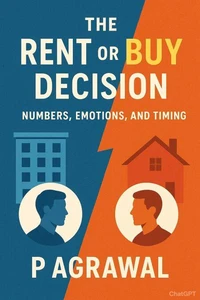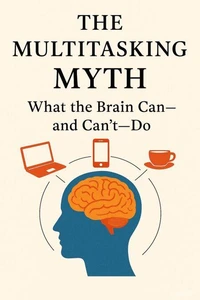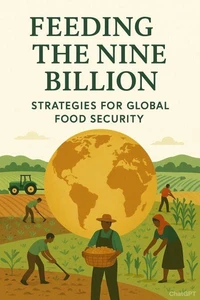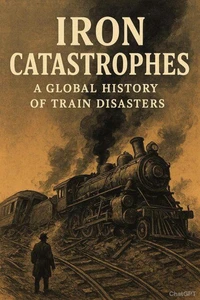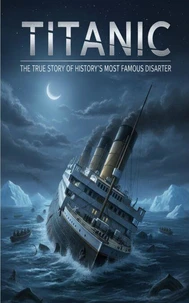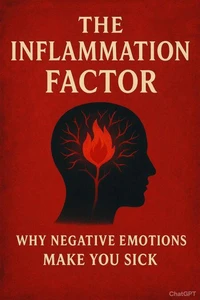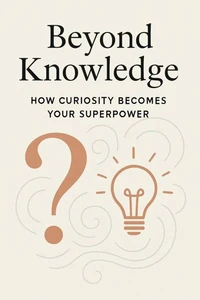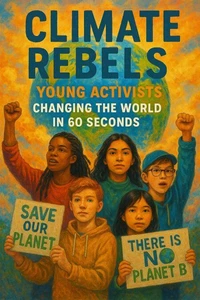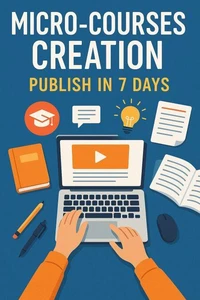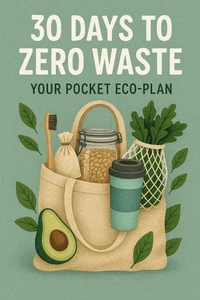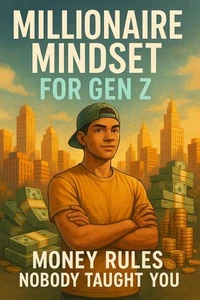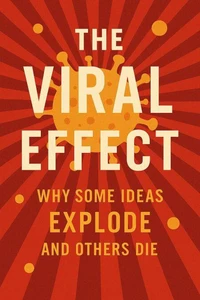Nouveauté
Pandemics Through Time: The History That Shaped Humanity
Par :Formats :
Disponible dans votre compte client Decitre ou Furet du Nord dès validation de votre commande. Le format ePub est :
- Compatible avec une lecture sur My Vivlio (smartphone, tablette, ordinateur)
- Compatible avec une lecture sur liseuses Vivlio
- Pour les liseuses autres que Vivlio, vous devez utiliser le logiciel Adobe Digital Edition. Non compatible avec la lecture sur les liseuses Kindle, Remarkable et Sony
 , qui est-ce ?
, qui est-ce ?Notre partenaire de plateforme de lecture numérique où vous retrouverez l'ensemble de vos ebooks gratuitement
Pour en savoir plus sur nos ebooks, consultez notre aide en ligne ici
- FormatePub
- ISBN8232084615
- EAN9798232084615
- Date de parution17/09/2025
- Protection num.pas de protection
- Infos supplémentairesepub
- ÉditeurHamza elmir
Résumé
"Pandemics Through Time: The History That Shaped Humanity" is a clear, human story of how diseases and people have shaped each other-from the first crowded cities to the age of jet travel and beyond. Blending vivid history with plain explanations of science, it shows how outbreaks begin, how they spread, how societies respond, and how each crisis leaves behind new tools, new ideas, and new responsibilities.
The journey starts in the ancient world, where the Plague of Athens revealed how war and crowding turn illness into disaster, and moves through the Justinianic Plague, where rats, fleas, grain ships, and empire combined to send buboes and fear across continents. It then meets the Black Death, the great turning point that reordered labor, faith, and power in Europe, and taught hard lessons about quarantine, care, and the costs of blame.
Crossing oceans, the book shows how smallpox and measles traveled with conquest during the Columbian Exchange, and how Indigenous and African knowledge, along with early variolation and vaccination, began a long fight back. In the nineteenth century, cholera raced through booming cities and forced a revolution in sewers, water, and the birth of epidemiology-John Snow's map, Joseph Bazalgette's pipelines, and the first international health rules.
Tuberculosis then becomes the mirror of the Industrial Age, revealing how housing, wages, sunlight, and stigma shape a "social disease, " and how sanatoria, X-rays, and later antibiotics changed fate without erasing inequality. The twentieth century arrives with the 1918 influenza, a swift, worldwide shock that proved the power of early, layered measures and honest communication. The polio era follows, with iron lungs, the March of Dimes, and two vaccines-Salk's inactivated and Sabin's oral-ushering in a global model of mass immunization, surveillance, and near-eradication.
HIV/AIDS then tests the world's conscience, as activism and science together turn a death sentence into a manageable condition, and establish durable truths about rights, dignity, and community-led care. Entering the twenty-first century, the book examines SARS and MERS, two stern warnings that hospitals, airflow, and contact tracing can stop a dangerous virus if used quickly and well. It looks at avian and swine influenzas-H5N1, H7N9, and 2009 H1N1-to explain surveillance, vaccine timing, and why humble protections like masks, ventilation, and paid sick leave matter.
The COVID-19 chapters bring these lessons together-variants, vaccines at record speed, clean indoor air, supply chains, misinformation, and the long tail of recovery-without losing sight of everyday courage and care. The closing chapter, "The Next Pandemic, " is a practical guide to readiness. It outlines One Health vigilance across humans, animals, and environments; fast tests and genomic alarms; regional vaccine manufacturing; oxygen and surge plans; and the central role of equity and trust.
Throughout, the book offers timelines, case-study vignettes, and distilled lessons, written in simple bookish language for general readers, students, and policymakers alike. This is not a story of doom. It is a handbook of memory and foresight, showing how past pandemics built the tools to face the next one-and how wise choices can keep us connected, prosperous, and safer together.
The journey starts in the ancient world, where the Plague of Athens revealed how war and crowding turn illness into disaster, and moves through the Justinianic Plague, where rats, fleas, grain ships, and empire combined to send buboes and fear across continents. It then meets the Black Death, the great turning point that reordered labor, faith, and power in Europe, and taught hard lessons about quarantine, care, and the costs of blame.
Crossing oceans, the book shows how smallpox and measles traveled with conquest during the Columbian Exchange, and how Indigenous and African knowledge, along with early variolation and vaccination, began a long fight back. In the nineteenth century, cholera raced through booming cities and forced a revolution in sewers, water, and the birth of epidemiology-John Snow's map, Joseph Bazalgette's pipelines, and the first international health rules.
Tuberculosis then becomes the mirror of the Industrial Age, revealing how housing, wages, sunlight, and stigma shape a "social disease, " and how sanatoria, X-rays, and later antibiotics changed fate without erasing inequality. The twentieth century arrives with the 1918 influenza, a swift, worldwide shock that proved the power of early, layered measures and honest communication. The polio era follows, with iron lungs, the March of Dimes, and two vaccines-Salk's inactivated and Sabin's oral-ushering in a global model of mass immunization, surveillance, and near-eradication.
HIV/AIDS then tests the world's conscience, as activism and science together turn a death sentence into a manageable condition, and establish durable truths about rights, dignity, and community-led care. Entering the twenty-first century, the book examines SARS and MERS, two stern warnings that hospitals, airflow, and contact tracing can stop a dangerous virus if used quickly and well. It looks at avian and swine influenzas-H5N1, H7N9, and 2009 H1N1-to explain surveillance, vaccine timing, and why humble protections like masks, ventilation, and paid sick leave matter.
The COVID-19 chapters bring these lessons together-variants, vaccines at record speed, clean indoor air, supply chains, misinformation, and the long tail of recovery-without losing sight of everyday courage and care. The closing chapter, "The Next Pandemic, " is a practical guide to readiness. It outlines One Health vigilance across humans, animals, and environments; fast tests and genomic alarms; regional vaccine manufacturing; oxygen and surge plans; and the central role of equity and trust.
Throughout, the book offers timelines, case-study vignettes, and distilled lessons, written in simple bookish language for general readers, students, and policymakers alike. This is not a story of doom. It is a handbook of memory and foresight, showing how past pandemics built the tools to face the next one-and how wise choices can keep us connected, prosperous, and safer together.
"Pandemics Through Time: The History That Shaped Humanity" is a clear, human story of how diseases and people have shaped each other-from the first crowded cities to the age of jet travel and beyond. Blending vivid history with plain explanations of science, it shows how outbreaks begin, how they spread, how societies respond, and how each crisis leaves behind new tools, new ideas, and new responsibilities.
The journey starts in the ancient world, where the Plague of Athens revealed how war and crowding turn illness into disaster, and moves through the Justinianic Plague, where rats, fleas, grain ships, and empire combined to send buboes and fear across continents. It then meets the Black Death, the great turning point that reordered labor, faith, and power in Europe, and taught hard lessons about quarantine, care, and the costs of blame.
Crossing oceans, the book shows how smallpox and measles traveled with conquest during the Columbian Exchange, and how Indigenous and African knowledge, along with early variolation and vaccination, began a long fight back. In the nineteenth century, cholera raced through booming cities and forced a revolution in sewers, water, and the birth of epidemiology-John Snow's map, Joseph Bazalgette's pipelines, and the first international health rules.
Tuberculosis then becomes the mirror of the Industrial Age, revealing how housing, wages, sunlight, and stigma shape a "social disease, " and how sanatoria, X-rays, and later antibiotics changed fate without erasing inequality. The twentieth century arrives with the 1918 influenza, a swift, worldwide shock that proved the power of early, layered measures and honest communication. The polio era follows, with iron lungs, the March of Dimes, and two vaccines-Salk's inactivated and Sabin's oral-ushering in a global model of mass immunization, surveillance, and near-eradication.
HIV/AIDS then tests the world's conscience, as activism and science together turn a death sentence into a manageable condition, and establish durable truths about rights, dignity, and community-led care. Entering the twenty-first century, the book examines SARS and MERS, two stern warnings that hospitals, airflow, and contact tracing can stop a dangerous virus if used quickly and well. It looks at avian and swine influenzas-H5N1, H7N9, and 2009 H1N1-to explain surveillance, vaccine timing, and why humble protections like masks, ventilation, and paid sick leave matter.
The COVID-19 chapters bring these lessons together-variants, vaccines at record speed, clean indoor air, supply chains, misinformation, and the long tail of recovery-without losing sight of everyday courage and care. The closing chapter, "The Next Pandemic, " is a practical guide to readiness. It outlines One Health vigilance across humans, animals, and environments; fast tests and genomic alarms; regional vaccine manufacturing; oxygen and surge plans; and the central role of equity and trust.
Throughout, the book offers timelines, case-study vignettes, and distilled lessons, written in simple bookish language for general readers, students, and policymakers alike. This is not a story of doom. It is a handbook of memory and foresight, showing how past pandemics built the tools to face the next one-and how wise choices can keep us connected, prosperous, and safer together.
The journey starts in the ancient world, where the Plague of Athens revealed how war and crowding turn illness into disaster, and moves through the Justinianic Plague, where rats, fleas, grain ships, and empire combined to send buboes and fear across continents. It then meets the Black Death, the great turning point that reordered labor, faith, and power in Europe, and taught hard lessons about quarantine, care, and the costs of blame.
Crossing oceans, the book shows how smallpox and measles traveled with conquest during the Columbian Exchange, and how Indigenous and African knowledge, along with early variolation and vaccination, began a long fight back. In the nineteenth century, cholera raced through booming cities and forced a revolution in sewers, water, and the birth of epidemiology-John Snow's map, Joseph Bazalgette's pipelines, and the first international health rules.
Tuberculosis then becomes the mirror of the Industrial Age, revealing how housing, wages, sunlight, and stigma shape a "social disease, " and how sanatoria, X-rays, and later antibiotics changed fate without erasing inequality. The twentieth century arrives with the 1918 influenza, a swift, worldwide shock that proved the power of early, layered measures and honest communication. The polio era follows, with iron lungs, the March of Dimes, and two vaccines-Salk's inactivated and Sabin's oral-ushering in a global model of mass immunization, surveillance, and near-eradication.
HIV/AIDS then tests the world's conscience, as activism and science together turn a death sentence into a manageable condition, and establish durable truths about rights, dignity, and community-led care. Entering the twenty-first century, the book examines SARS and MERS, two stern warnings that hospitals, airflow, and contact tracing can stop a dangerous virus if used quickly and well. It looks at avian and swine influenzas-H5N1, H7N9, and 2009 H1N1-to explain surveillance, vaccine timing, and why humble protections like masks, ventilation, and paid sick leave matter.
The COVID-19 chapters bring these lessons together-variants, vaccines at record speed, clean indoor air, supply chains, misinformation, and the long tail of recovery-without losing sight of everyday courage and care. The closing chapter, "The Next Pandemic, " is a practical guide to readiness. It outlines One Health vigilance across humans, animals, and environments; fast tests and genomic alarms; regional vaccine manufacturing; oxygen and surge plans; and the central role of equity and trust.
Throughout, the book offers timelines, case-study vignettes, and distilled lessons, written in simple bookish language for general readers, students, and policymakers alike. This is not a story of doom. It is a handbook of memory and foresight, showing how past pandemics built the tools to face the next one-and how wise choices can keep us connected, prosperous, and safer together.

